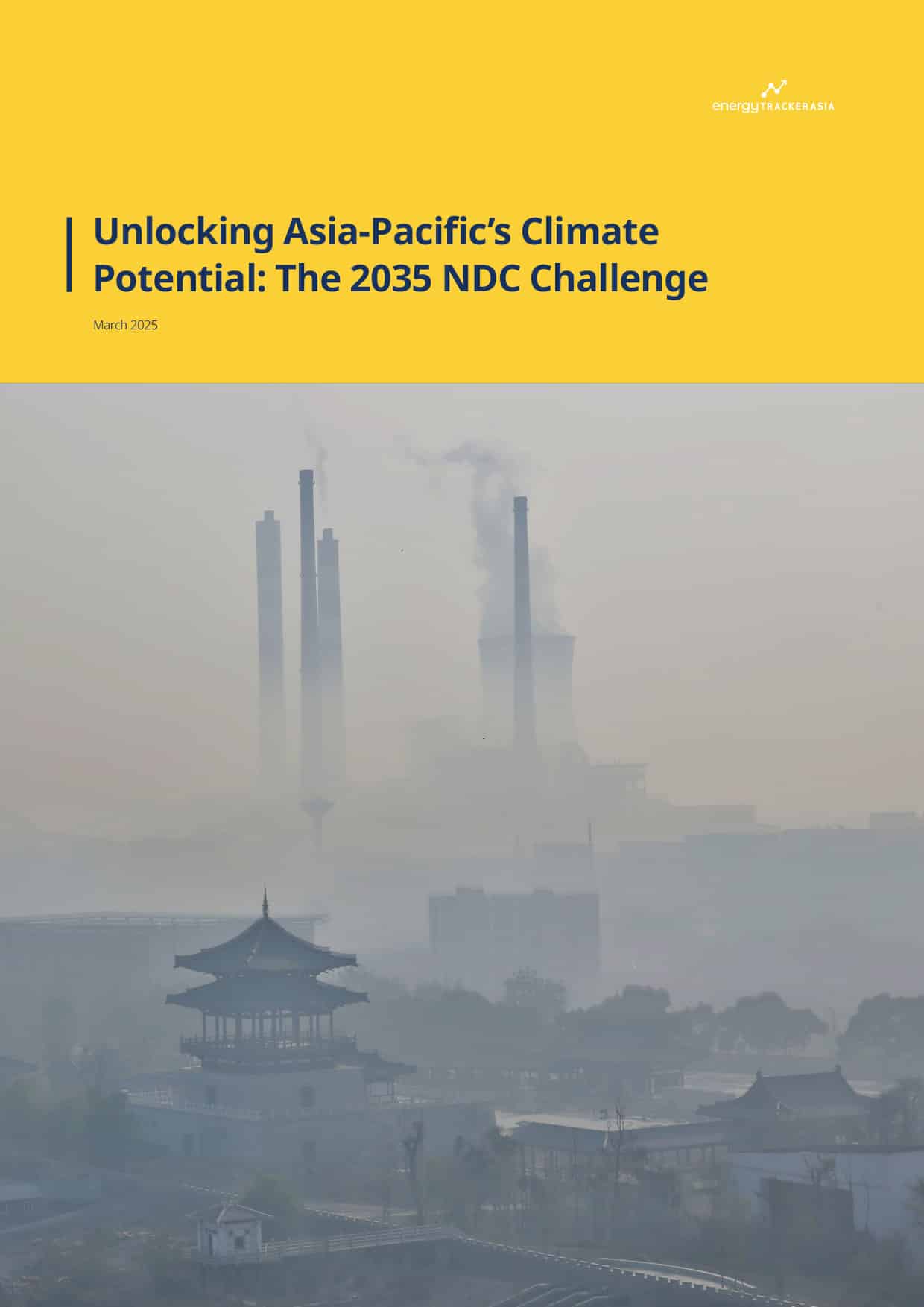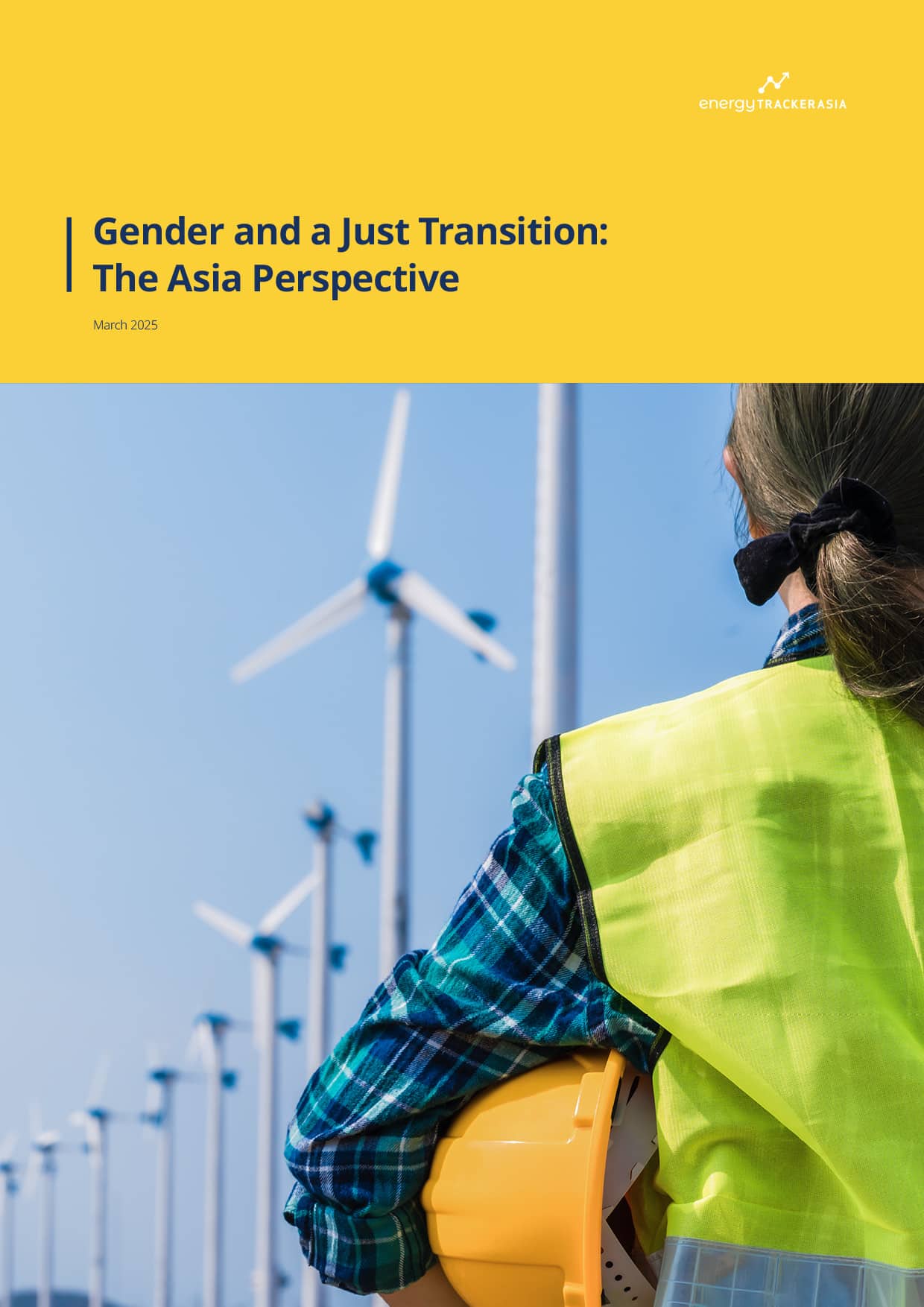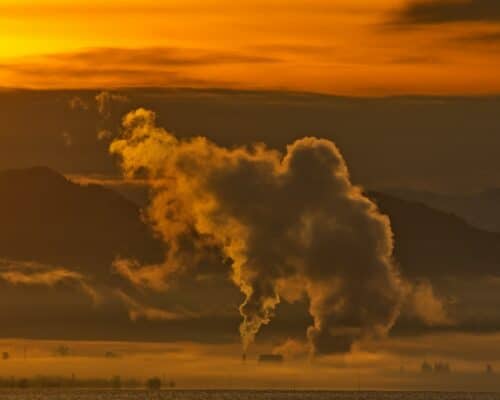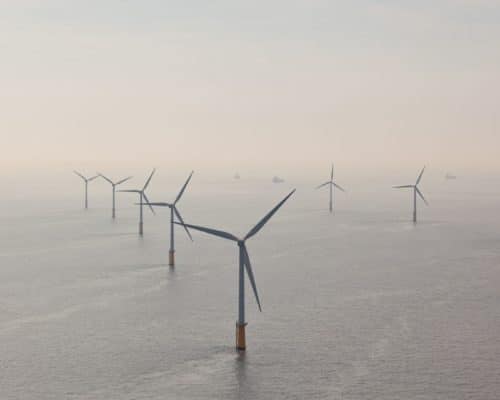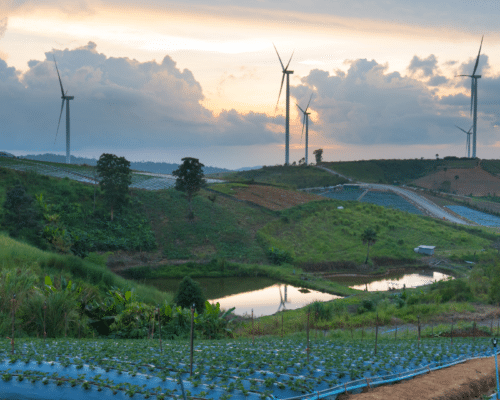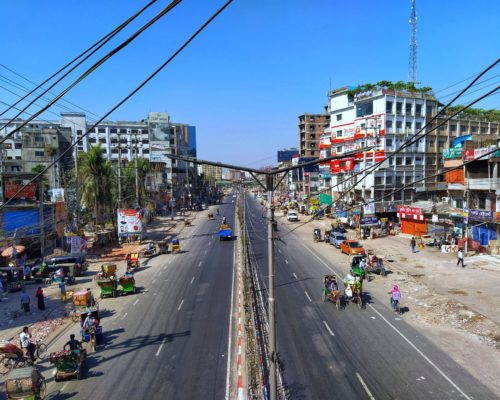Climate Tops Voters’ Priorities As Asia Pacific Braces for 2025 Elections
14 April 2025 – by Viktor Tachev
In 2025, many countries across the Asia-Pacific region will have elections, including some of the biggest carbon emitters. Voters from some of the most climate-vulnerable regions in the world will head to the polling stations in times of increased geopolitical uncertainty and mounting challenges for democracy and climate policies. The outcomes of the elections in the Asia-Pacific region could not only bear massive regional importance but also provide a clear indication of where global decarbonisation efforts are heading during the year of the most critical national climate policy updates in history.
2025 Elections in the Asia Pacific: What to Expect
In Asia, the past year alone has seen major political transitions — from Indonesia’s presidential election to South Korea’s leadership crisis. And 2025 promises to be no different. Australia, Japan, Singapore, South Korea and the Philippines are among the countries that will hold elections this year. Some of these nations have been among the biggest carbon emitters and others are planning to continue stalling in their phasing out of fossil fuels or are even scaling up their expansion. Others have suffered some of the harshest impacts of climate change and are struggling to bear the economic costs of fossil fuel import dependence.
The 2025 elections are proving a prime opportunity for voters across these key markets to indicate where they want their country to head next, as the outcomes of some of the elections are likely to have a massive impact on national climate policies and emissions reduction plans. For political contestants, climate and energy policies should sit at the top of their priority lists not only as tools to ensure their nations’ well-being but also to win support from voters concerned about the climate and the cost-of-living crises.
Australia: Federal Elections in May 2025
Australia’s federal elections, which are expected to be held in May 2025, will have all 150 seats in the House of Representatives and 40 of 76 Senate seats on the line. However, experts consider it too early to forecast the chances of current Prime Minister Anthony Albanese remaining in charge. Still, opinion polls indicate that the chances of either party gaining the numbers needed to govern in their own right are slim. Instead, the early projections reveal that independent candidates are likely to receive strong support and increase their presence in parliament, challenging the two-party model in the country. For example, this year, Climate 200, a group that supports candidates whose platforms include environmental awareness, provided funding to 35 independent election participants.
According to reports in local media, the housing and cost of living crises, as well as climate change, remain the top concerns of Australian voters. Furthermore, local organisations are urging voters to prioritise the climate crisis as a key factor when heading to the polls, arguing that the country has “lost a decade” under the leadership of the current opposition.
Under the current leadership, Australia is making some progress. However, despite some promising new clean energy investments and recently expressed ambition to lure “tens of billions of dollars” in renewables investment from the US after Trump’s election, the nation remains among the strongest fossil fuel proponents, domestically and internationally.
Climate Action Tracker notes that emissions from the energy, industry, agriculture and waste sectors fail to decline due to the long-standing fossil fuel support from the Australian government. According to the organisation, the continued support for the local fossil fuel industry undermines any serious attempt at contributing a fair share to addressing climate change, practically “embedding” the role of fossil fuels on Australia’s domestic energy stage for the decades ahead.
Still, the outcome of the elections can change the country’s trajectory as it plans to delay the release of its updated NDC until after the results come out in May.
Japan: House of Councillors Elections by July 27, 2025
This year, Japanese voters will cast their votes for the House of Councillors, the upper, less powerful of the Japanese parliament’s two chambers. According to experts, the elections might prove crucial for the future of the Liberal Democratic Party (LDP), which has ruled Japan for most of its post-World War II history. The LDP also currently has a plurality of seats in the lower House of Representatives, although not enough for a majority.
While the House of Councillors can’t introduce legislation, it can veto laws passed through the House of Representatives. Analysts say this can have massive consequences for Japan’s leadership, considering the lack of strong support for Prime Minister Shigeru Ishiba’s government. According to surveys, 50% of Japanese voters disapprove of the current cabinet, with just 31% voicing support.
As recently reported in Energy Tracker Asia, Prime Minister Ishiba has promised US President Donald Trump record purchases of LNG and indicated potential interest in importing bioethanol, ammonia and other resources. Japan’s efforts to appease Trump and the fixation on gas and fossil fuel-based technologies threaten not only to derail its climate policies but also to influence the energy plans of Southeast Asian nations.
The country has already submitted the official version of its 2035 NDC, and the document has received strong criticism from campaigners for being too unambitious. The plan pledges a 60% emissions reduction target by 2035 and 73% by 2040, compared to 2013. According to CAT, the proposed 2035 target fails to align with the Paris Agreement, which requires at least 81% by 2035 (all sectors included).
While the 2025 elections won’t directly impact the nation’s climate policies, they can influence the approval or vetoing of the cabinet’s decisions, including on matters related to energy, climate and other areas.
Singapore: General Parliamentary Election by November 2025
Singapore will hold a general parliamentary election in November. However, experts don’t believe the vote will be eventful, with the conservative People’s Action Party (PAP) that has governed Singapore since independence again forecast to win. The current leadership has previously restricted the rights to assembly and free speech and faced scandals related to corruption.
Considering the preliminary forecasts, Singapore is likely to continue with its sluggish climate progress. The country was among the few that submitted its updated NDC by the official deadline. However, it demonstrated a modest improvement from the previous 2030 target, despite the government stating it identified climate change as an existential challenge and expressing commitment to climate action. The country’s climate policies are rated “highly insufficient” by Climate Action Tracker, with the analysts even suspending updates for Singapore.
South Korea: Presidential Elections in June 2025
South Korea is going through a period of heightened political uncertainty, which started last year with the impeachment of President Yoon Suk-yeol.
However, Korea’s political crisis can be a blessing in disguise, offering an opportunity for a transformative shift in climate policy under new leadership.
The country’s current climate policies and targets lack ambition, aiming for a 40% emissions reduction by 2030 below 2018 levels and just 32% without the contribution of forestry and overseas reductions. For reference, Climate Action Tracker notes that a Paris Agreement-aligned pathway requires a domestic emissions reduction of 75% by 2030.
In fact, in 2024, the Constitutional Court of Korea declared South Korea’s GHG reduction targets unconstitutional, emphasising that they should meet the minimum necessary conditions as protective measures against the climate crisis and correspond to the share that the country should contribute to global reduction efforts based on scientific facts and international standards.
As the second-highest per capita emitter in the G20, South Korea should demonstrate strong ambition in its 2035 NDC by focusing on scaling up the share of renewables at the expense of fossil fuels. According to the Natural Resources Defense Council, for a minimal or low overshoot of the IPCC 1.5°C scenario, South Korea would have to slash emissions by 68% compared to 2018 levels by 2035. A Paris Agreement-aligned scenario requires the country to phase out coal from the power sector by 2030 at the latest, with gas following shortly after. This would help South Korea change the fact that its coal power emissions are over three times higher than the global average and more than twice the G20 average.
During the general elections last year, both parties tried to appeal to the increasing number of climate voters. The ruling People Power Party (PPP) announced intentions to pursue a balanced development between nuclear and renewable energy sources and set up a special act to support regions that decommission coal power plants. This may be the same for the upcoming election.
The opposing Democratic Party (DP) has placed RE100, as a way to drive renewables expansion, at the top of its agenda and pledged to enact a Korean version of the U. Inflation Reduction Act to promote clean energy use. The DP has also outlined ambitious climate goals, including developing a solar and wind energy belt and increasing renewables’ share to 40% of the energy mix by 2035.
According to experts, the DP, currently holding a majority in the National Assembly, is poised to win the presidential election.
The Philippines: Midterm Elections on May 12, 2025
The country will have its midterm elections with all seats in the House of Representatives and half of the seats in the Senate to be contested. Local elections will also take place for the executive and legislative branches in every province, city and municipality.
Filipinos will head to the polling stations amid heightened political tensions and growing calls to remove President Ferdinand Marcos Jr.
The climate vulnerability of the Philippines will be a primary factor for voters. The country has been the most at-risk for climate-related disasters globally for the past three years and within the top 10 for the past two decades. According to a January survey, 87% of Filipinos plan to vote for candidates committed to addressing climate change and enhancing disaster preparedness.
Civil society organisations and policy experts recently launched the Green Agenda 2025, a comprehensive advocacy platform promoting ecological integrity, climate justice and sustainable governance for the upcoming elections. The initiative lays out key priorities and advocates for action against environmental challenges faced by the country. The coalition also urges voters to scrutinise candidates’ environmental platforms and demand accountability from leaders.
The Philippine Business for Environmental Stewardship has also called on Filipinos to prioritise environmental advocacy in their voting decisions.
The hopes for the Philippines to show increased ambition in its updated 2035 NDC are high since the nation’s previous plan was already compatible with a “1.5°C global least cost” pathway. However, CAT warns that the leadership should pledge significant emissions reductions far beyond current policies to make meaningful progress. Doing so will help the country accelerate the economy’s decarbonisation, scale up renewable energy deployment and address the fact that Filipinos have to bear the highest energy costs in Southeast Asia.
The Upcoming Elections and NDC Updates Make 2025 a Crucial Year For APAC
The 2025 elections in the Asia Pacific will go ahead under the cloud of global geopolitical uncertainty and increasing division lines between a climate change-denying US government and clean technology leadership from China. Both superpowers have spheres of influence across the region, and the outcomes of the individual elections can reshape the foreign policy orientation of different nations.
However, before considering which power to align with, leadership contestants should prioritise the needs of their voters. With over four in five people in APAC facing multi-hazard risks associated with slow or sudden onset climate events and over 60% of the region’s working population employed in sectors highly susceptible to changing weather patterns, it is understandable why climate change and the energy policies impacting it are becoming key concerns for voters.
According to the Asian Development Bank, climate change could destroy 17% of the GDP in the APAC region by 2070 under a high-end emissions scenario, which could rise to 41% by 2100. Lower-income countries and the region’s poorest will be the hardest hit.
In that sense, by embracing and effectively embedding climate policies in their programs, candidates will not only prioritise the well-being of their nations but also win public support and establish a long-term vision for economic growth and development for their countries.
To convince voters of their determination and sincerity, election contestants should build their programs around climate change mitigation and adaptation. With the former, the priority should be on aligning emissions reduction plans with scientific consensus, with phasing out fossil fuels and scaling up renewables deployment also crucial. This would also help strengthen energy security and reduce electricity costs due to expensive fuel imports. Regarding adaptation, it is crucial to recognise the importance of effective disaster preparedness and resilience-building, including investing in efficient urban planning and innovative disaster response systems to minimise damage from extreme weather events and protect the most vulnerable.
Importantly, prioritising climate action and sustainable energy policies where expensive fossil fuel imports are substituted by cheaper domestic renewable energy generation offers political contestants the unique opportunity to yield positives not only by appealing to climate voters but also by addressing the concerns of the entire voter base related to the severe cost of living crisis tormenting most APAC nations.
by Viktor Tachev
Viktor has years of experience in financial markets and energy finance, working as a marketing consultant and content creator for leading institutions, NGOs, and tech startups. He is a regular contributor to knowledge hubs and magazines, tackling the latest trends in sustainability and green energy.
Read more